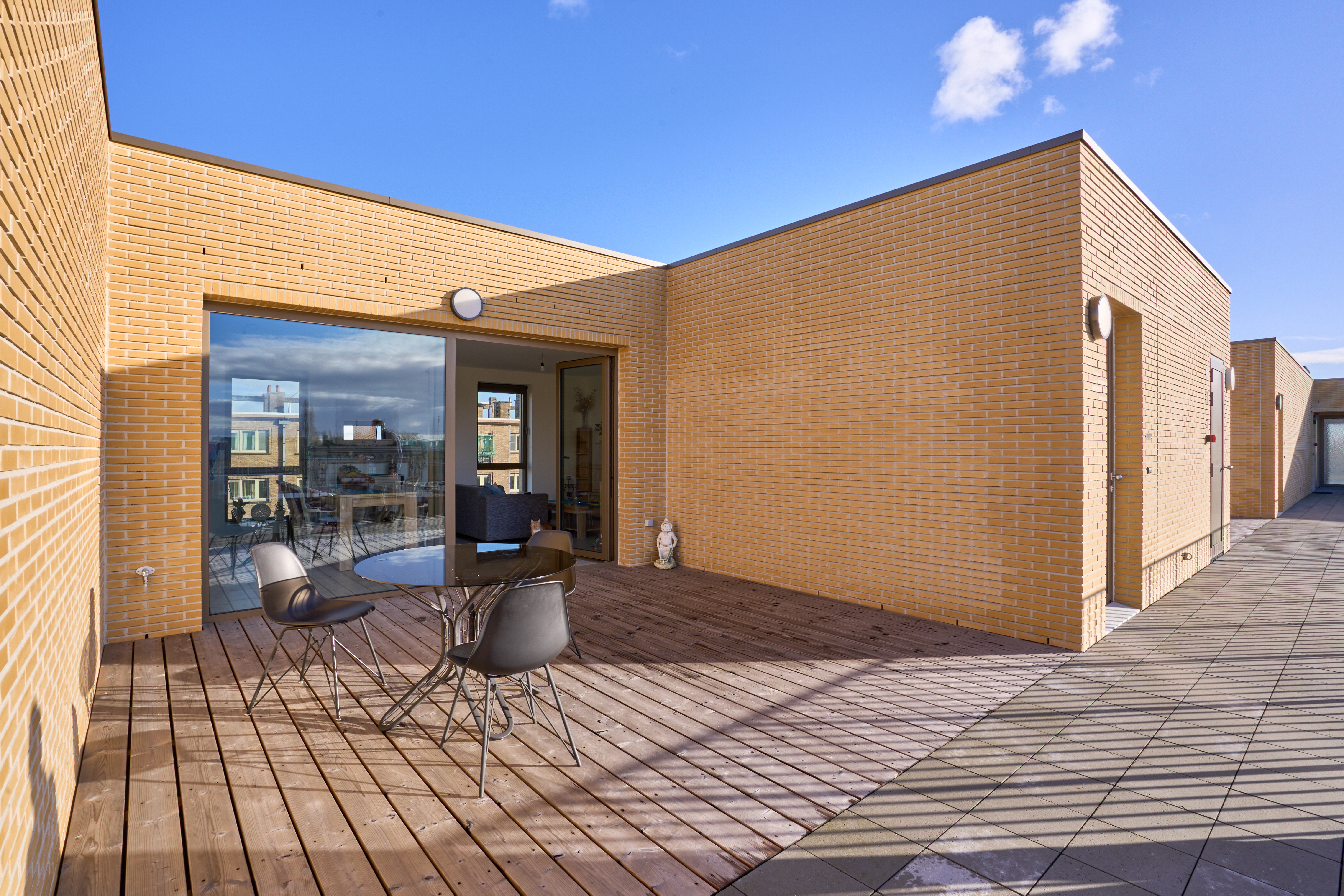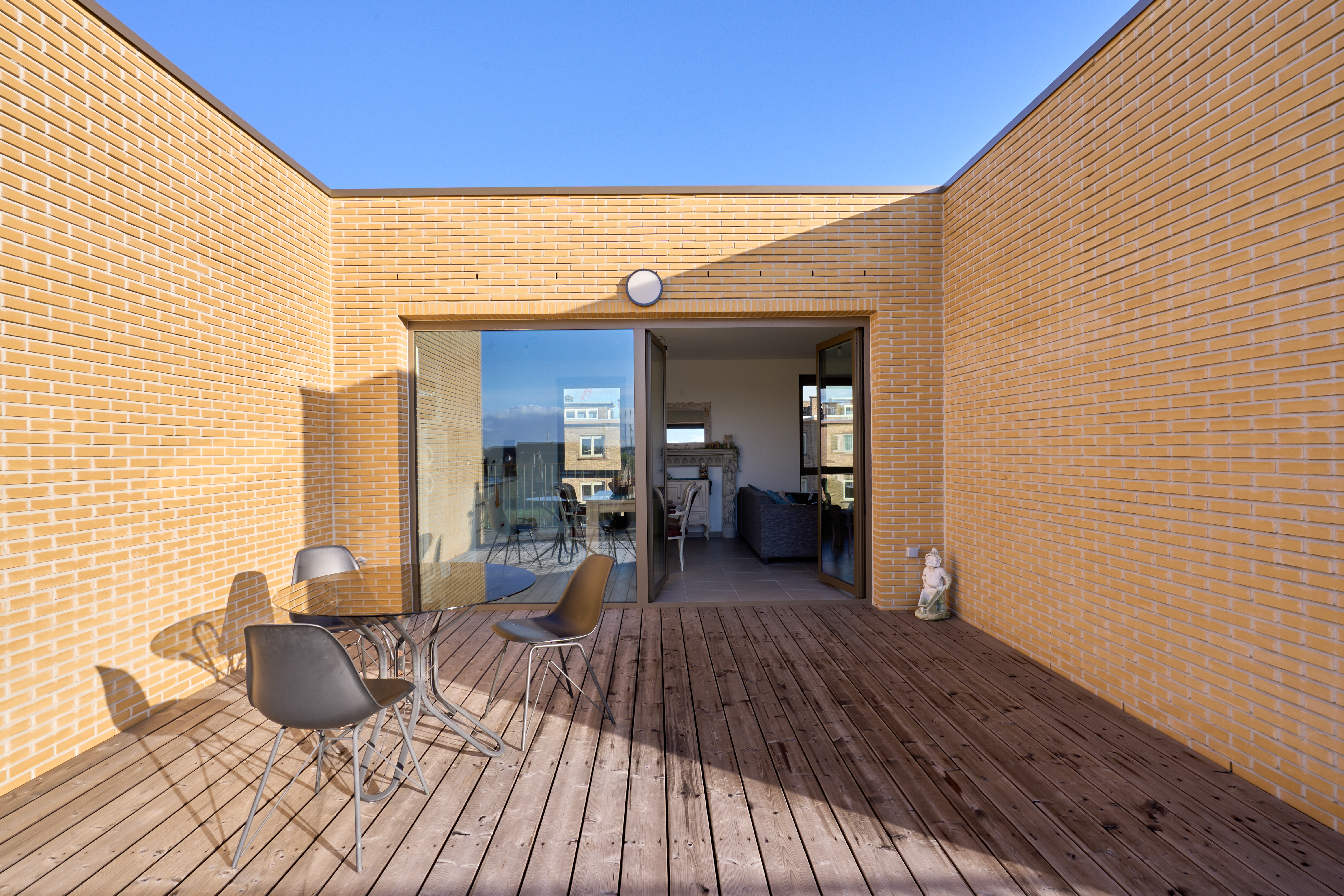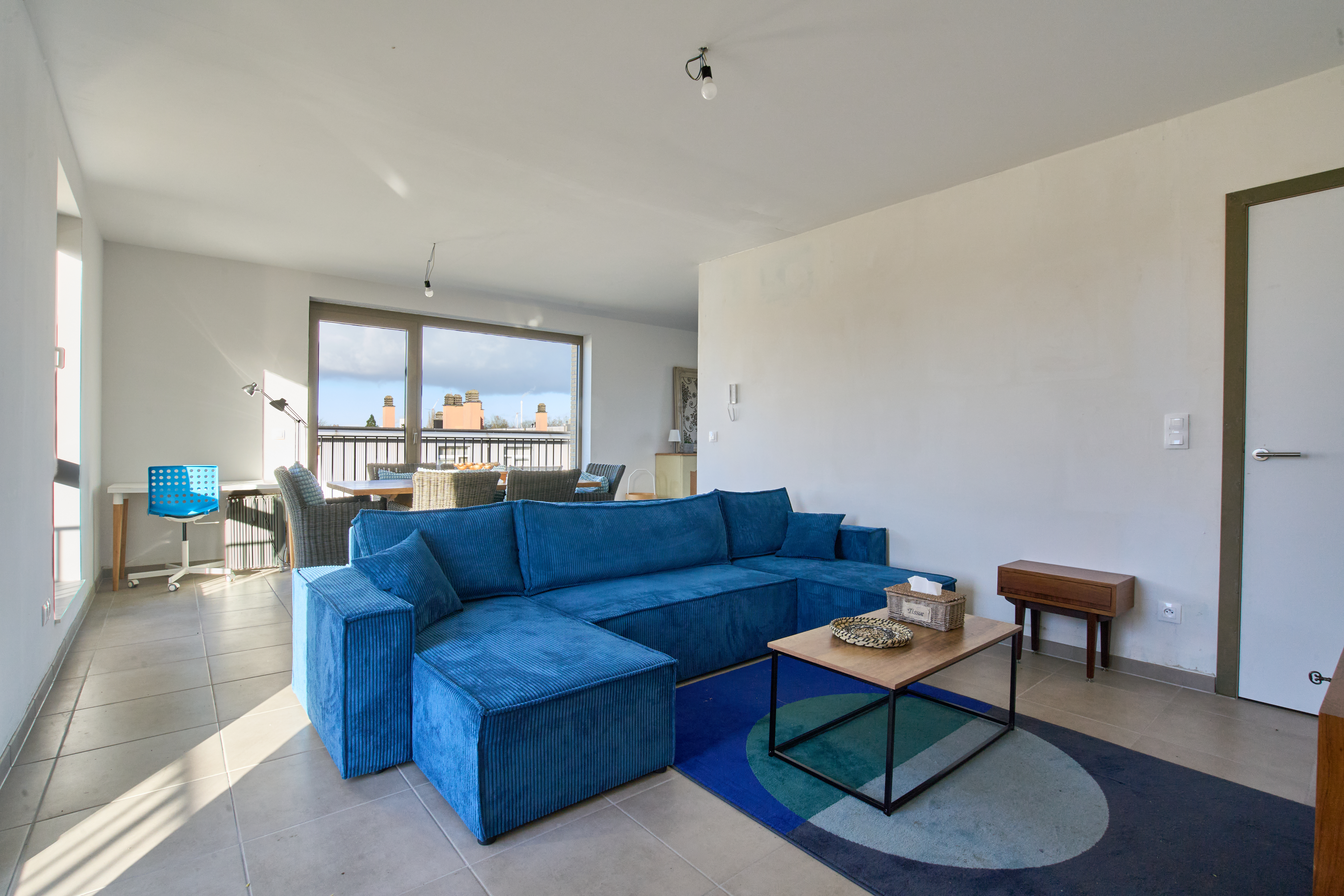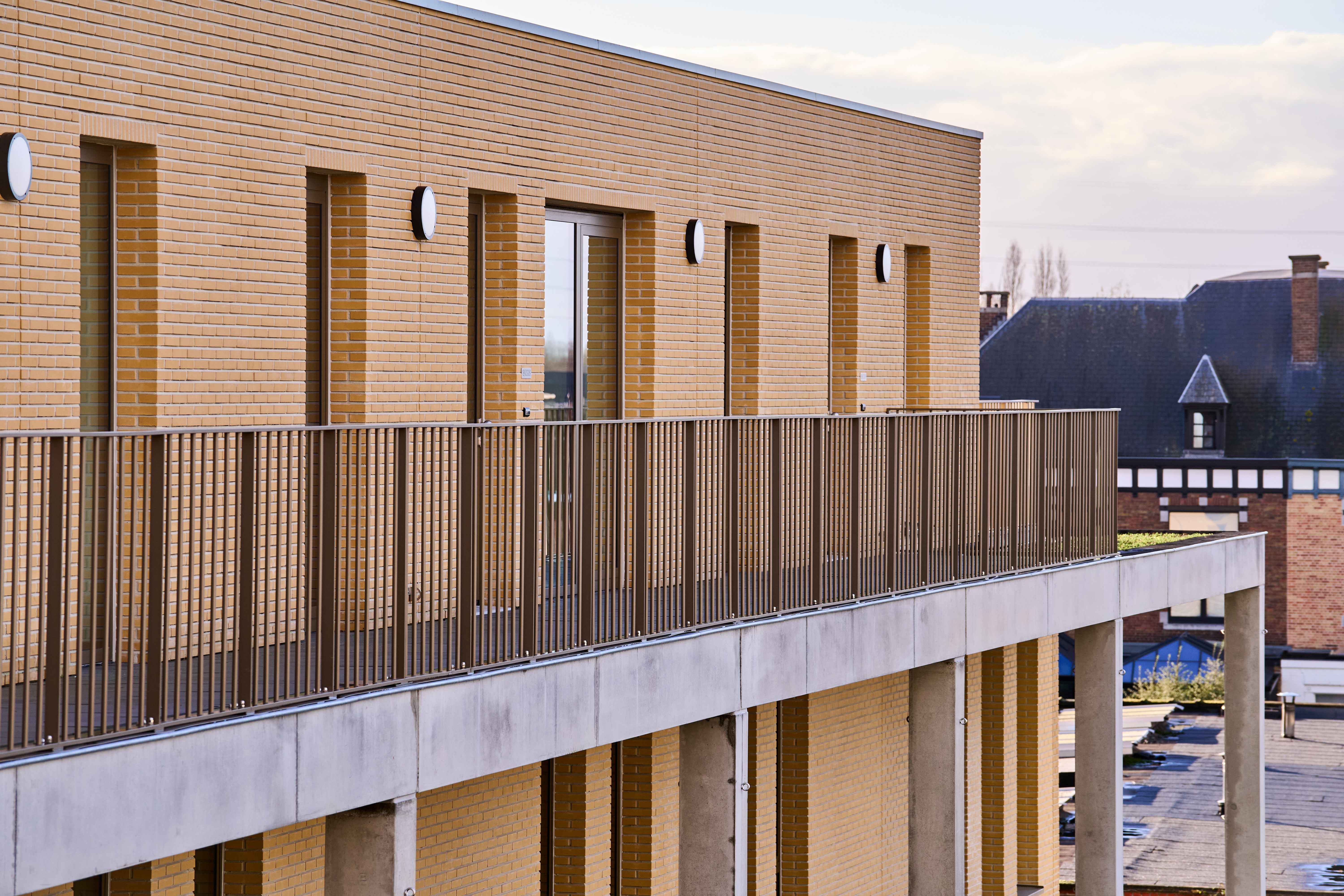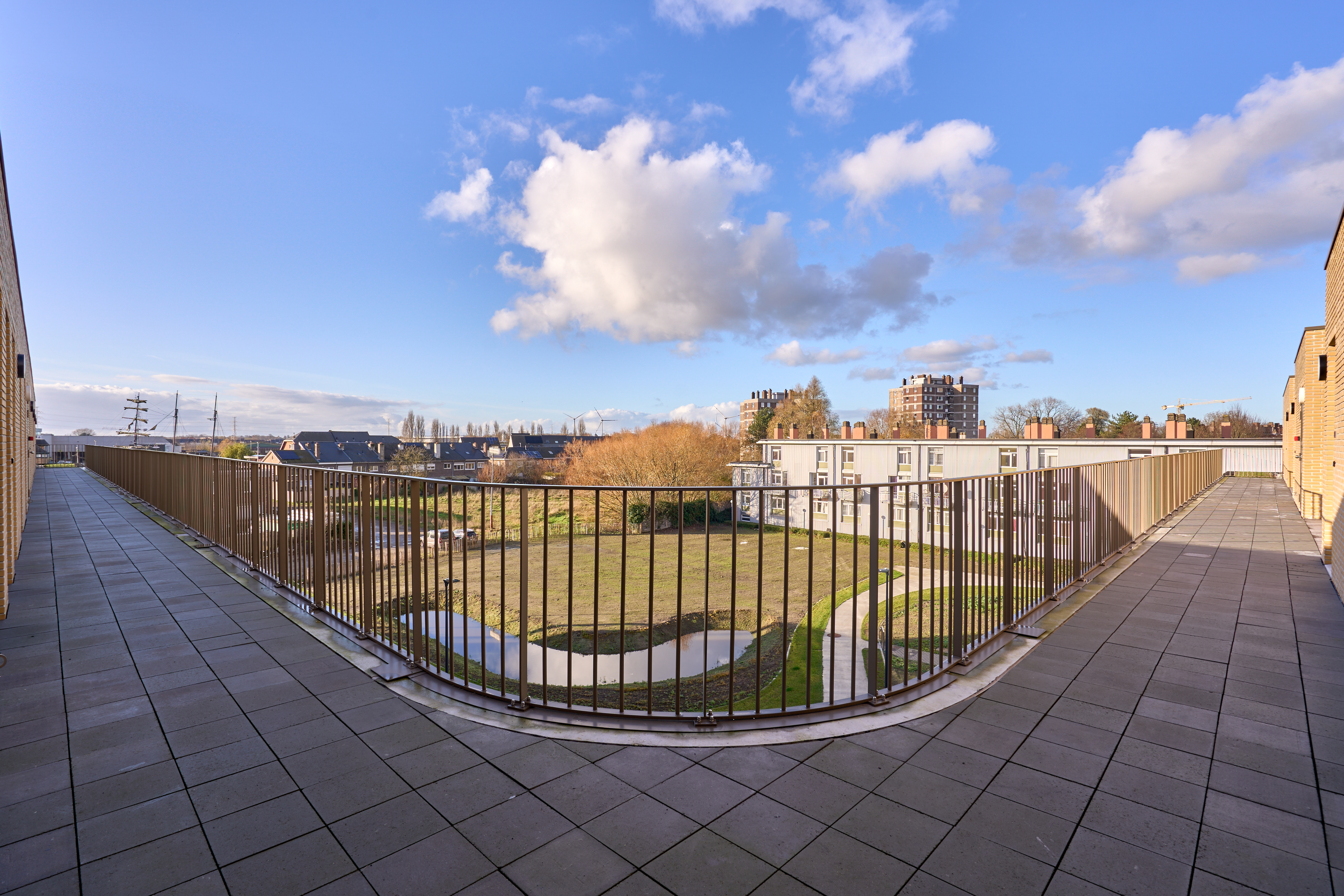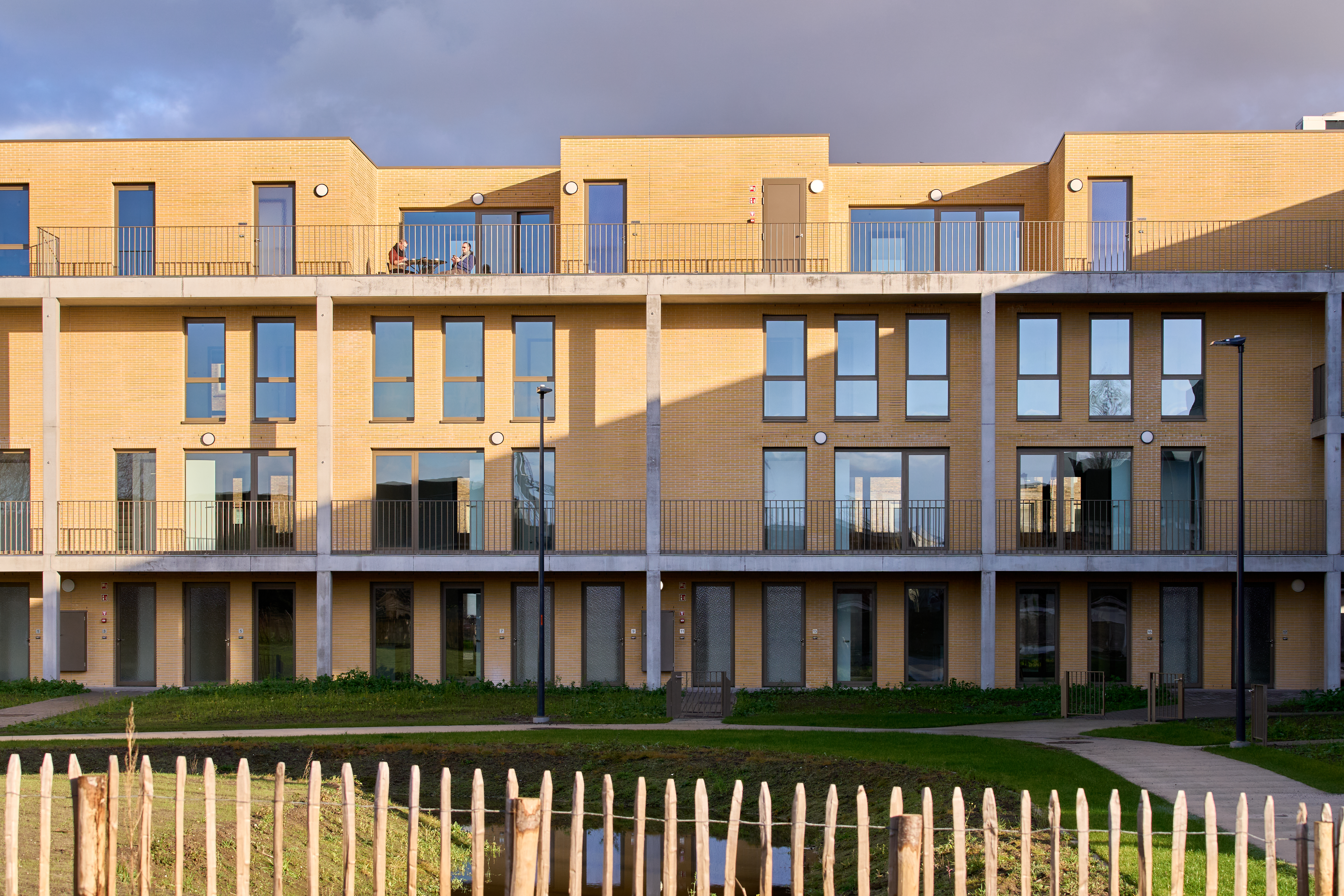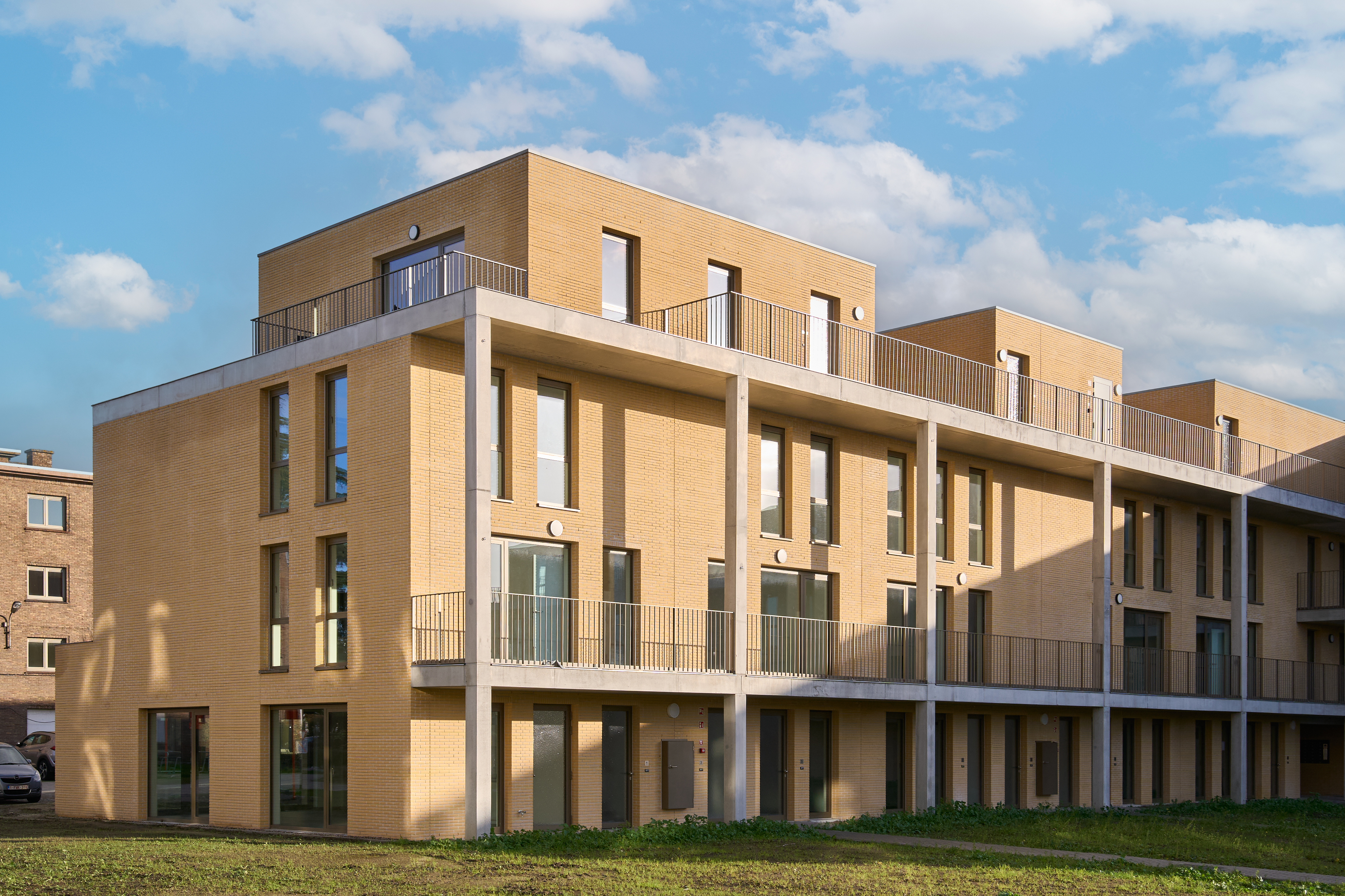Prioritising the places and people that need it the most
Community Land Trust project in Ghent
Affordable housing in Ghent: putting a new housing model into practice
Forever affordable housing in Ghent: you buy the home, not the land. Community Land Trust Ghent creates sustainable, high-quality homes at affordable prices on community-owned land for vulnerable groups, following an innovative, neighbourhood-focused, and participatory model.
Belgium
Local
Ghent
Mainly urban
It refers to a physical transformation of the built environment (hard investment)
Yes
2024-10-31
No
No
Yes
Yes
Yes
As a representative of an organisation
The Community Land Trust (CLT) housing model separates land ownership from housing. Buyers purchase the home and become homeowners, but the land remains owned by a Foundation (Trust), preventing speculation on land prices. This model guarantees that land is used for the common good, dedicated to sustainable, affordable housing.
In the first Flemish CLT project, 34 low-income families have found a home. This model not only enables them to buy a house, but also ensures long-term affordability – protecting both the land and the housing from speculation, even upon resale.
At the heart of CLT is community building. Residents form a supportive community and manage their housing project collectively. They create working groups on managing the communal garden, a legal group that contributes to the allocation and internal regulations, a festival committee, and a welcome group for new residents, as many families are currently in the process of moving into their new homes. A key element is the community space, which is managed by the residents but is also open to the wider neighbourhood, fostering social inclusion.
Through compact stacking, maximum park preservation, the use of solid materials, and shared facilities and technologies, sustainability is embedded in all aspects of the architecture.
CLT Ghent perfectly embodies the NEB values: environmental sustainability through a minimal footprint and maximum park preservation, inclusion by offering housing to vulnerable groups, and quality of life through the community-centred living environment.
CLT Ghent operates through two legal entities: the Foundation which owns the land, manages property rights and housing resale, and the non-profit organization (vzw) that supports residents, fosters community engagement, and guides prospective homeowners throughout the CLT process. Through participatory sessions, residents actively shape both their homes and their neighbourhood.
In the first Flemish CLT project, 34 low-income families have found a home. This model not only enables them to buy a house, but also ensures long-term affordability – protecting both the land and the housing from speculation, even upon resale.
At the heart of CLT is community building. Residents form a supportive community and manage their housing project collectively. They create working groups on managing the communal garden, a legal group that contributes to the allocation and internal regulations, a festival committee, and a welcome group for new residents, as many families are currently in the process of moving into their new homes. A key element is the community space, which is managed by the residents but is also open to the wider neighbourhood, fostering social inclusion.
Through compact stacking, maximum park preservation, the use of solid materials, and shared facilities and technologies, sustainability is embedded in all aspects of the architecture.
CLT Ghent perfectly embodies the NEB values: environmental sustainability through a minimal footprint and maximum park preservation, inclusion by offering housing to vulnerable groups, and quality of life through the community-centred living environment.
CLT Ghent operates through two legal entities: the Foundation which owns the land, manages property rights and housing resale, and the non-profit organization (vzw) that supports residents, fosters community engagement, and guides prospective homeowners throughout the CLT process. Through participatory sessions, residents actively shape both their homes and their neighbourhood.
Affordable housing
Anti-speculation model
Community building
Inclusive decision-making
Sustainable architecture
Through compact stacking, maximum park preservation, solid material use, and shared facilities and systems, sustainability is woven into every aspect of the architecture. The limited façade length is carefully optimized to maximize natural light and ventilation while preserving privacy. A diverse mix of housing typologies and outdoor spaces encourages collective living while always allowing residents the choice to engage or retreat. Above all, every effort is made to ensure that this sustainable way of living remains affordable.
The intelligent spatial configuration of homes not only minimizes land use but also reduces costs and heat loss. A smaller footprint means less foundation and roof surface, fewer façade elements, and ultimately a more economical and ecological building. Compared to a traditional mix of row houses and apartment blocks, this results in a significantly more compact and efficient structure.
The logical layout and collective approach enable an energy-efficient heating system. A spacious communal heating room, located in a less light-sensitive corner of the building, houses a shared heat pump system that provides warmth for all units. This reduces both construction costs and the space needed within each home. Additionally, centralizing heat production allows for efficient maintenance and future upgrades without disrupting residents.
Ultimately, the high level of collectivity—an inherent value of the CLT ideology—is embedded in both the building’s design and its technical systems. This results in a sustainable, compact, energy-efficient, and low-maintenance structure that sets a strong example for future housing models.
The intelligent spatial configuration of homes not only minimizes land use but also reduces costs and heat loss. A smaller footprint means less foundation and roof surface, fewer façade elements, and ultimately a more economical and ecological building. Compared to a traditional mix of row houses and apartment blocks, this results in a significantly more compact and efficient structure.
The logical layout and collective approach enable an energy-efficient heating system. A spacious communal heating room, located in a less light-sensitive corner of the building, houses a shared heat pump system that provides warmth for all units. This reduces both construction costs and the space needed within each home. Additionally, centralizing heat production allows for efficient maintenance and future upgrades without disrupting residents.
Ultimately, the high level of collectivity—an inherent value of the CLT ideology—is embedded in both the building’s design and its technical systems. This results in a sustainable, compact, energy-efficient, and low-maintenance structure that sets a strong example for future housing models.
The design breaks away from the traditional divide between houses and apartments. It merges the benefits of compact, low-footprint apartment living with qualities typically associated with individual houses, such as privacy, outdoor space, and direct access from the ground level. This innovative housing typology enables a minimal footprint—maximizing open space—while maintaining high living quality. The residences are arranged around a newly created park.
Through open-plan living areas, front gardens, and entrances, homes are strongly connected to the shared green space. A collective front garden creates a residential feel while ensuring privacy from the public park. This interplay between the park, the collective garden, and the residences is vital to the project's social and spatial dynamics.
To enhance shared experiences, communal functions such as a studio and a laundry room are placed at the north end of the site, where the collective front garden converges. This strategic positioning activates both the shared green space and the communal areas, fostering interaction. Residents can relax in the shared lounge while waiting for their laundry, keeping an eye on children playing outside.
Privacy and collectivity go hand in hand, with choice as a guiding principle. This philosophy extends to outdoor spaces: at the south side, private terraces and gardens are carefully layered. A raised green parapet ensures privacy between rooftop terraces and ground-floor gardens, while setbacks for the top-floor apartments prevent direct overlooking. The façade design balances privacy and openness. Additionally, the cantilevered terraces provide natural shading for the residences below.
By smartly interconnecting homes, we merge the best aspects of houses and apartments. Generous terraces, gardens, natural light, privacy, and communal spaces are combined into an affordable, compact whole. The result is not only highly functional but also visually distinctive and inviting.
Through open-plan living areas, front gardens, and entrances, homes are strongly connected to the shared green space. A collective front garden creates a residential feel while ensuring privacy from the public park. This interplay between the park, the collective garden, and the residences is vital to the project's social and spatial dynamics.
To enhance shared experiences, communal functions such as a studio and a laundry room are placed at the north end of the site, where the collective front garden converges. This strategic positioning activates both the shared green space and the communal areas, fostering interaction. Residents can relax in the shared lounge while waiting for their laundry, keeping an eye on children playing outside.
Privacy and collectivity go hand in hand, with choice as a guiding principle. This philosophy extends to outdoor spaces: at the south side, private terraces and gardens are carefully layered. A raised green parapet ensures privacy between rooftop terraces and ground-floor gardens, while setbacks for the top-floor apartments prevent direct overlooking. The façade design balances privacy and openness. Additionally, the cantilevered terraces provide natural shading for the residences below.
By smartly interconnecting homes, we merge the best aspects of houses and apartments. Generous terraces, gardens, natural light, privacy, and communal spaces are combined into an affordable, compact whole. The result is not only highly functional but also visually distinctive and inviting.
The land always remains owned by the Foundation, whose mission is to ensure affordable housing. This prevents speculation on land prices and guarantees that the land is permanently used for affordable housing.
The project is designed for people with lower incomes, who only pay for the construction cost of their home. In this first CLT project in Flanders, 34 families have become homeowners under fair and sustainable conditions.
The residential project consists of 34 homes of different types: 14 one-bedroom flats, 4 2-bedroom flats and 16 larger flats (3 and 4 bedrooms) : this mix also makes for an intergenerational project. Both families with children and single people take on the management of this project together.
Homeowners can sell their property and leave the CLT model, but resales follow strict conditions: the selling price is capped and pre-determined in the purchase agreement, ensuring affordability for future buyers. Homes can only be sold to eligible households that meet specific income criteria, preventing profit-driven speculation.
This innovative model rethinks property ownership. In Belgium, separating land from housing is rare, yet this approach ensures long-term affordability.
Inclusion is also brought about through decision-making. (Future) residents are part of CLT Ghent's decision-making bodies. This is an important starting point.
The project is designed for people with lower incomes, who only pay for the construction cost of their home. In this first CLT project in Flanders, 34 families have become homeowners under fair and sustainable conditions.
The residential project consists of 34 homes of different types: 14 one-bedroom flats, 4 2-bedroom flats and 16 larger flats (3 and 4 bedrooms) : this mix also makes for an intergenerational project. Both families with children and single people take on the management of this project together.
Homeowners can sell their property and leave the CLT model, but resales follow strict conditions: the selling price is capped and pre-determined in the purchase agreement, ensuring affordability for future buyers. Homes can only be sold to eligible households that meet specific income criteria, preventing profit-driven speculation.
This innovative model rethinks property ownership. In Belgium, separating land from housing is rare, yet this approach ensures long-term affordability.
Inclusion is also brought about through decision-making. (Future) residents are part of CLT Ghent's decision-making bodies. This is an important starting point.
The core principle of CLT Ghent is that decision-making within a CLT project always involves three groups: the residents, the broader civil society, and representatives from one or more levels of government. This aims to achieve equality in decision-making. Residents of the projects are given the opportunity to participate in the decision-making process.
Another fundamental principle within a CLT project is the involvement of not only the residents but also the wider neighbourhood. In this first CLT project in Flanders, a community space was created. This space is important for the 34 households living in the project, but it is also significant for the wider neighbourhood. Local residents can use this community space, which is managed by the CLT residents. The residents aim to make their housing model visible to the wider neighbourhood, take responsibility, participate in broader neighbourhood life, and engage in dialogue with other local residents and/or neighbourhood organizations.
A related initiative is the Supermerkade, a social grocery store where low-income people can shop. The CLT residents are involved in this project, which is literally just a stone's throw away from the CLT project.
The future residents themselves were also involved in the design of the houses. The design of the houses, the layout of the communal garden and the community space were discussed with the residents.
Another fundamental principle within a CLT project is the involvement of not only the residents but also the wider neighbourhood. In this first CLT project in Flanders, a community space was created. This space is important for the 34 households living in the project, but it is also significant for the wider neighbourhood. Local residents can use this community space, which is managed by the CLT residents. The residents aim to make their housing model visible to the wider neighbourhood, take responsibility, participate in broader neighbourhood life, and engage in dialogue with other local residents and/or neighbourhood organizations.
A related initiative is the Supermerkade, a social grocery store where low-income people can shop. The CLT residents are involved in this project, which is literally just a stone's throw away from the CLT project.
The future residents themselves were also involved in the design of the houses. The design of the houses, the layout of the communal garden and the community space were discussed with the residents.
The Flemish government provided a regulatory framework within which the homes could be built: the existing Flemish system of ‘social homeownership’ was used to construct these homes. Through this regulatory framework, the CLT project was able to benefit from advantages such as a lower VAT rate for new construction.
The City of Ghent provided the land on which the first Flemish CLT project could be built.
Both the local and Flemish governments provided funding for the construction of the community space.
An important aspect is that the decision-making of CLT Ghent is carried out by three groups: the local government, civil society, and (future) residents. This is the essence of the CLT model: these three groups form the CLT structure and make decisions together.
The cooperation between the different levels of government in Belgium was necessary to realize this pilot project. After all, many regulations are aimed at the purchase of land and housing. In addition, it was necessary to provide an initial financial start-up subsidy in the form of the land. With this model, we want to market an anti-speculative housing model. However, it is difficult to buy a first plot of land in an expensive market. The cooperation with the local government was therefore crucial for the success of this first project.
A large public park will also be provided around this residential project. When private partners realise residential projects, the local government always looks for additional green space for the neighbourhood. Here, too, this resulted in fine cooperation between the private partner (CLT Ghent) and the local government.
The City of Ghent provided the land on which the first Flemish CLT project could be built.
Both the local and Flemish governments provided funding for the construction of the community space.
An important aspect is that the decision-making of CLT Ghent is carried out by three groups: the local government, civil society, and (future) residents. This is the essence of the CLT model: these three groups form the CLT structure and make decisions together.
The cooperation between the different levels of government in Belgium was necessary to realize this pilot project. After all, many regulations are aimed at the purchase of land and housing. In addition, it was necessary to provide an initial financial start-up subsidy in the form of the land. With this model, we want to market an anti-speculative housing model. However, it is difficult to buy a first plot of land in an expensive market. The cooperation with the local government was therefore crucial for the success of this first project.
A large public park will also be provided around this residential project. When private partners realise residential projects, the local government always looks for additional green space for the neighbourhood. Here, too, this resulted in fine cooperation between the private partner (CLT Ghent) and the local government.
As the first Flemish CLT project, this initiative benefited from a flexible regulatory framework provided by the Flemish government, allowing a social housing company to take the lead in construction, leveraging their extensive expertise in affordable housing
Ghent has a strong tradition of civic engagement. From the outset, the social welfare organization Saamo Gent actively supported the CLT model. Their expertise in community building and guidance for prospective and current homeowners added immense value, ensuring the project's social sustainability. As a CLT Gent board member, Saamo advocates for the participation of people in poverty in decision-making—one of the core principles of the CLT model.
The project is embedded in the broader integrated urban renewal plan for Ghent’s Muide-Meulestede-Morgen district, focusing on improving the living environment, enhancing green spaces, and ensuring appropriate housing. This plan follows a participatory approach, engaging local residents and organizations in decision-making processes.
Legal expertise was essential for drafting the leasehold agreements, as the land remains the property of the CLT Foundation. Resale conditions prevent speculation: homes cannot be sold at market prices, and only an indexed construction cost applies. Legal support was secured through a private firm with financial backing from the City of Ghent.
To secure financing, prospective buyers could access social loans from the Flemish government, an innovative step for this model. CLT Gent actively engaged with the Flemish credit provider to highlight the model’s benefits and facilitate affordable homeownership.
This transdisciplinary approach—integrating legal, financial, social, and urban planning expertise—enabled the creation of the first CLT project in Flanders. The result: 34 households now own a home at construction cost, not land value, maximizing their right to housing through an innovative and inclusive model.
Ghent has a strong tradition of civic engagement. From the outset, the social welfare organization Saamo Gent actively supported the CLT model. Their expertise in community building and guidance for prospective and current homeowners added immense value, ensuring the project's social sustainability. As a CLT Gent board member, Saamo advocates for the participation of people in poverty in decision-making—one of the core principles of the CLT model.
The project is embedded in the broader integrated urban renewal plan for Ghent’s Muide-Meulestede-Morgen district, focusing on improving the living environment, enhancing green spaces, and ensuring appropriate housing. This plan follows a participatory approach, engaging local residents and organizations in decision-making processes.
Legal expertise was essential for drafting the leasehold agreements, as the land remains the property of the CLT Foundation. Resale conditions prevent speculation: homes cannot be sold at market prices, and only an indexed construction cost applies. Legal support was secured through a private firm with financial backing from the City of Ghent.
To secure financing, prospective buyers could access social loans from the Flemish government, an innovative step for this model. CLT Gent actively engaged with the Flemish credit provider to highlight the model’s benefits and facilitate affordable homeownership.
This transdisciplinary approach—integrating legal, financial, social, and urban planning expertise—enabled the creation of the first CLT project in Flanders. The result: 34 households now own a home at construction cost, not land value, maximizing their right to housing through an innovative and inclusive model.
The separation of land and housing is uncommon, both in Flanders and across Europe, as the majority of real estate regulations focus on joint sales and construction of land and housing. This distinction required significant expertise development for this project.
By keeping the land under the ownership of a foundation, the project effectively removes land from speculative markets, ensuring long-term affordability and preventing price volatility driven by market forces. The eventual resale of homes is regulated by strict conditions outlined in the sales contract. This kind of conditional sale, which is rarely seen in Flanders, ensures that homes are sold at an affordable price. This shift in mindset required substantial time and collaboration with notaries and the Flemish social credit provider.
This separation allows people with low incomes to purchase sustainable new homes, something that would not have been possible in the traditional housing market. The project's design embraces the CLT ideology, where high levels of collectivity are integrated into the architecture and building systems. The shared spaces, collective ownership, and energy-efficient, low-maintenance design promote community engagement while offering a compact, sustainable solution.
This model also contributes to social sustainability by ensuring that affordable, high-quality housing is accessible to more vulnerable groups in society. It challenges conventional housing models, demonstrating that sustainability and affordability can go hand-in-hand without compromising quality of life. The shift towards collective ownership and long-term affordability, coupled with a focus on low-income residents, positions this project as a pioneering example of inclusive, environmentally responsible housing in the region.
Through its innovative approach, the project sets a new standard, addressing both ecological and social challenges in a balanced, forward-thinking manner.
By keeping the land under the ownership of a foundation, the project effectively removes land from speculative markets, ensuring long-term affordability and preventing price volatility driven by market forces. The eventual resale of homes is regulated by strict conditions outlined in the sales contract. This kind of conditional sale, which is rarely seen in Flanders, ensures that homes are sold at an affordable price. This shift in mindset required substantial time and collaboration with notaries and the Flemish social credit provider.
This separation allows people with low incomes to purchase sustainable new homes, something that would not have been possible in the traditional housing market. The project's design embraces the CLT ideology, where high levels of collectivity are integrated into the architecture and building systems. The shared spaces, collective ownership, and energy-efficient, low-maintenance design promote community engagement while offering a compact, sustainable solution.
This model also contributes to social sustainability by ensuring that affordable, high-quality housing is accessible to more vulnerable groups in society. It challenges conventional housing models, demonstrating that sustainability and affordability can go hand-in-hand without compromising quality of life. The shift towards collective ownership and long-term affordability, coupled with a focus on low-income residents, positions this project as a pioneering example of inclusive, environmentally responsible housing in the region.
Through its innovative approach, the project sets a new standard, addressing both ecological and social challenges in a balanced, forward-thinking manner.
The central premise is the separation of land and property. This method not only reduces the purchase price of the property. After all, the land price does not have to be paid. More important, however, is the retention of land indefinitely for the sake of affordable housing. CLT Ghent aims to offer affordable housing to low-income households. By retaining ownership of the land itself, speculation is avoided. This method thus ensures affordable housing across generations.
Secondly, CLT Ghent resolutely opts for an approach in which the future residents also have a say. The (candidate) residents are caught up in CLT Ghent's decision-making structures.
Secondly, CLT Ghent resolutely opts for an approach in which the future residents also have a say. The (candidate) residents are caught up in CLT Ghent's decision-making structures.
CLT Gent aims to establish this housing model as a blueprint, particularly because housing is a fundamental right. This model removes the speculative aspect of housing markets by allowing residents to purchase only the building at construction cost, while the land remains in the ownership of a foundation. Should the model be scaled, it remains financially viable for the foundation. Income from the ground lease can be reinvested into the foundation’s operational costs, ensuring long-term sustainability.
Over time, multiple plots of land will be protected for affordable housing purposes. CLT Gent has already built sufficient expertise to replicate this model across other locations within the city, considering both new construction and renovation projects.
Furthermore, CLT Gent has taken on the role of ambassador for this housing model throughout Flanders. To facilitate scaling, the organization has developed a comprehensive guide outlining the legal and administrative steps necessary to establish a CLT initiative. Scaling is essential for the foundation to function independently. The first project benefitted greatly from strong local government support during its experimental phase, and now the focus is on expanding the model's reach.
The model's approach could easily be transferred to other cities or regions facing housing affordability challenges. By separating land and housing, the model provides a sustainable solution for people with low incomes, preventing speculation and ensuring long-term affordability. With a clear roadmap, a supportive legal framework, and the development of a collective ownership model, this project offers a replicable approach for sustainable and inclusive urban development.
Over time, multiple plots of land will be protected for affordable housing purposes. CLT Gent has already built sufficient expertise to replicate this model across other locations within the city, considering both new construction and renovation projects.
Furthermore, CLT Gent has taken on the role of ambassador for this housing model throughout Flanders. To facilitate scaling, the organization has developed a comprehensive guide outlining the legal and administrative steps necessary to establish a CLT initiative. Scaling is essential for the foundation to function independently. The first project benefitted greatly from strong local government support during its experimental phase, and now the focus is on expanding the model's reach.
The model's approach could easily be transferred to other cities or regions facing housing affordability challenges. By separating land and housing, the model provides a sustainable solution for people with low incomes, preventing speculation and ensuring long-term affordability. With a clear roadmap, a supportive legal framework, and the development of a collective ownership model, this project offers a replicable approach for sustainable and inclusive urban development.
Affordable housing is the foundation for a dignified life. Numerous studies demonstrate that quality housing opens the door to fulfilling other human rights. This project directly contributes to the UN's Sustainable Development Goal (SDG) of "No Poverty," as housing is a fundamental human right. Secure, adequate housing provides a platform for people to access other essential rights, like education, healthcare, and employment. Poverty organizations agree that effective poverty reduction begins with quality, affordable housing.
The project also addresses SDG "Sustainable Cities and Communities." Community building, both among the residents and with the broader neighbourhood, is a core principle of the CLT housing model. Strong communities foster stronger, more resilient citizens.
Affordable housing remains a pressing issue across Europe, particularly as traditional homeownership and rental markets often exclude lower-income households. This project offers an innovative solution by promoting the development of housing models that can complement conventional market-driven models. Government support was essential for this initiative, and with sufficient scale, this model could become self-sustaining. Local authorities can play a key role by allocating land for such projects, creating opportunities for broader implementation.
Currently, new homes are primarily built for people with higher incomes or as investment products. The CLT model offers a sustainable, affordable alternative: homes sold at construction cost without speculation on land value. By removing the land from the speculative market, this model ensures that land remains dedicated to its primary purpose – providing affordable housing for low- to moderate-income households, helping to alleviate the housing crisis.
The project also addresses SDG "Sustainable Cities and Communities." Community building, both among the residents and with the broader neighbourhood, is a core principle of the CLT housing model. Strong communities foster stronger, more resilient citizens.
Affordable housing remains a pressing issue across Europe, particularly as traditional homeownership and rental markets often exclude lower-income households. This project offers an innovative solution by promoting the development of housing models that can complement conventional market-driven models. Government support was essential for this initiative, and with sufficient scale, this model could become self-sustaining. Local authorities can play a key role by allocating land for such projects, creating opportunities for broader implementation.
Currently, new homes are primarily built for people with higher incomes or as investment products. The CLT model offers a sustainable, affordable alternative: homes sold at construction cost without speculation on land value. By removing the land from the speculative market, this model ensures that land remains dedicated to its primary purpose – providing affordable housing for low- to moderate-income households, helping to alleviate the housing crisis.
Thirty-four low-income households have successfully purchased homes at affordable prices, securing their right to housing and embracing the concept that land should not be subject to speculative markets. This model has provided these households with long-term stability and an opportunity to escape the cycle of market-driven price fluctuations.
The residents are actively engaged in community building, both within their project and with the surrounding neighbourhood. This collective engagement fosters a sense of ownership and social cohesion, aligning with the project’s goal of promoting strong, resilient communities.
The 34 homes, along with their associated land, are removed from the speculative real estate market, providing a concrete example of how land can be used to serve the public good. The foundation of this approach ensures that the land remains dedicated to affordable housing, making the project a sustainable solution in the face of rising housing costs.
CLT Gent has introduced an innovative housing model that prioritizes land use for affordable housing, addressing the pressing need for alternative housing solutions. The project, initially launched as an experimental initiative, encountered numerous legal and regulatory hurdles, but with perseverance and collaboration, these were overcome. As a result, the construction of 34 homes and a shared community space is now completed, with the final residents moving into their new homes.
The project has already made significant strides in demonstrating how alternative housing models can effectively challenge conventional market-driven approaches. The long-term impact of this initiative extends beyond the individual homes themselves, offering a sustainable, community-driven solution that can serve as a model for future urban development, benefiting not only the direct residents but also inspiring broader societal change.
The residents are actively engaged in community building, both within their project and with the surrounding neighbourhood. This collective engagement fosters a sense of ownership and social cohesion, aligning with the project’s goal of promoting strong, resilient communities.
The 34 homes, along with their associated land, are removed from the speculative real estate market, providing a concrete example of how land can be used to serve the public good. The foundation of this approach ensures that the land remains dedicated to affordable housing, making the project a sustainable solution in the face of rising housing costs.
CLT Gent has introduced an innovative housing model that prioritizes land use for affordable housing, addressing the pressing need for alternative housing solutions. The project, initially launched as an experimental initiative, encountered numerous legal and regulatory hurdles, but with perseverance and collaboration, these were overcome. As a result, the construction of 34 homes and a shared community space is now completed, with the final residents moving into their new homes.
The project has already made significant strides in demonstrating how alternative housing models can effectively challenge conventional market-driven approaches. The long-term impact of this initiative extends beyond the individual homes themselves, offering a sustainable, community-driven solution that can serve as a model for future urban development, benefiting not only the direct residents but also inspiring broader societal change.

